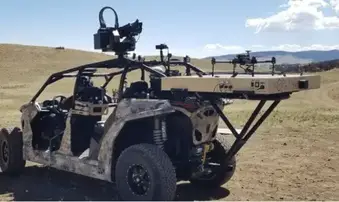Skydio, the U.S. drone manufacturer and a provider of autonomous flight, will now offer the Skydio X2 with new multiband technology and capabilities – the Skydio X2D Multiband. The new X2D Multiband’s ability to operate on multiple frequencies makes it ideal for use globally for the most critical operations in contested environments for government aerial intelligence, reconnaissance and situational awareness, emergency services, and search and rescue operations.
The Skydio X2D Multiband was developed in collaboration with a number of Skydio’s domestic and international defense customers to enhance performance and versatility across various communication systems. By utilizing different frequency bands, the X2D can overcome limitations such as interference, attenuation, or bandwidth constraints in a single frequency band.
“The new Skydio X2D Multiband enables compliance with frequency and spectrum management requirements, in multiple countries, providing operational flexibility within different regulatory frameworks and across a wide range of operational frequencies,” said Mike Ross, Chief of Staff, Product Management at Skydio. “The ability to toggle between frequencies allows for secure communication without interference.”
The Skydio X2D is powered by Skydio Autonomy Enterprise, an AI-driven autonomous flight engine that enables unparalleled 360° obstacle avoidance, autonomous tracking, GPS-denied navigation, and complete workflow automation. The X2D comes equipped with a dual-sensor payload that includes a color camera and a FLIR® thermal sensor. Built to exceed the Short-Range Reconnaissance (SRR) requirements for the U.S. Army, the Skydio X2D is designed and manufactured in the USA, ruggedized, foldable, and compliant with the National Defense Authorization Act (NDAA).
Additional X2D highlights include the Skydio X2D also offers an optional add-on of Skydio 3D Scan – which automates the data capture process to generate 3D models with comprehensive coverage and ultra-high resolution; offers wireless range & frequencies up to 6.2 mi/10km; average flight of 35min; and cybersecurity protection with AES-256 wireless encryption.










